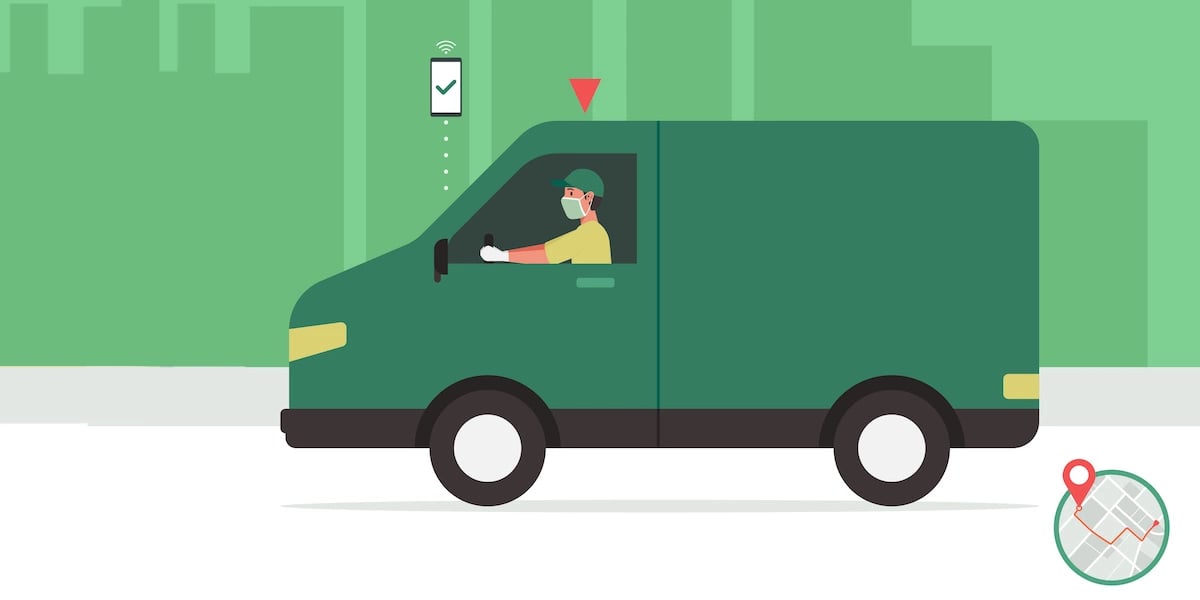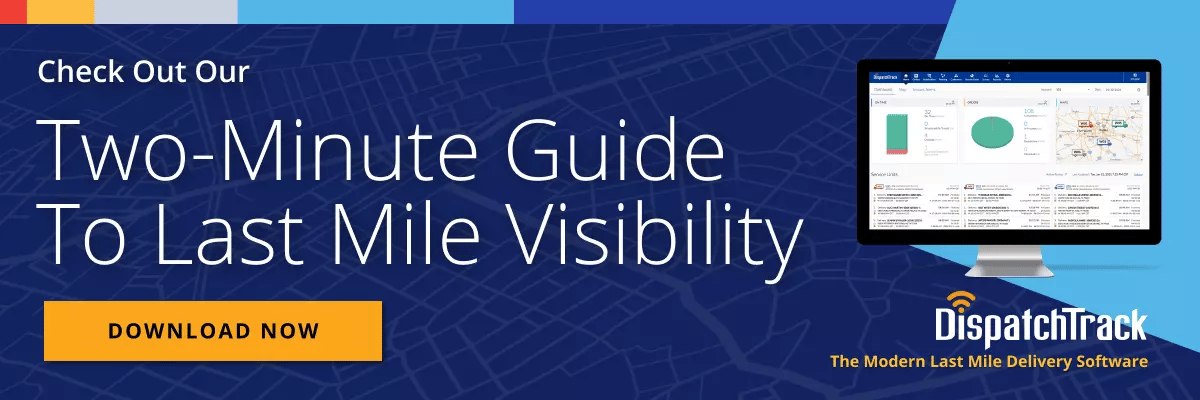The following is Part 5 in a series of posts about DispatchTrack’s point of view on the trends that will drive the logistics and logistics technology markets in 2022 and beyond. This week, we’ll be discussing something particularly near and dear to our hearts: sustainability. Specifically, we’ll talk about why sustainability needs to be one of the most important considerations in the future of logistics, and how businesses can approach the problem of decreasing emissions across the supply chain. You can check out Part 1, Part 2, Part 3, and Part 4, or you may also be interested in DispatchTrack CEO and co-founder Satish Natarajan’s Logistics Technology Wishlist for 2022.

It’s easy to miss, but if you glance down to the bottom of the page below Google’s search bar, you’ll see the following claim: “Carbon neutral since 2007.” You might not immediately associate big tech companies like Google with the fight against climate change, but there’s no denying that for some businesses at least, the effort is there.
In fact, information technology has been one of the leading sectors so far in attempting to counteract global warming, with Alphabet (Google’s parent company), HP, and Cisco all named as some of the best publicly traded companies from the perspective of preventing emissions.
On the other side of the coin, we have industries like construction, agriculture, and, yes, logistics that are in some ways behind the curve. All that means is that there’s a lot of room for sustainable practices to grow and make a difference in something like the global supply chain—as soon as businesses across the spectrum start to treat the issue urgently.
At DispatchTrack, we’re hoping that 2022 is a big year for logistics players deepening their commitment to more sustainable practices.
Why Is Sustainability in Logistics Such a Challenge?
Fundamentally, logistics is a difficult thing to optimize when it comes to carbon emissions. Last mile logistics in particular involves driving countless miles and making a huge number of stops, and it’s notoriously difficult to do efficiently. Moving people and products across large distances has always been a major source of energy consumption, and it’s no different when it comes to getting the consumer the couch they loved in your showroom or getting your top on-premise account its kegs of beer.
But that’s not the only reason that sustainability is such a challenge here. But there are other factors to consider as well:
- Idling trucks can use up significant fuel as well.
- Failed first delivery attempts essentially double the fuel consumption for a given order.
- Returned items that might be damaged or defective ultimately wind up contributing to waste.
Yes, making fifteen stops per day in a box truck uses up a lot of fuel. As we transition towards alternative fuel sources, that problem may become less acute—in the meantime, businesses that are serious about sustainability need to find a way to drive fewer miles.
But in some ways, what’s at the heart of the sustainability question for last mile operators isn’t the inherent inefficiency of last mile logistics—rather, it’s last mile visibility.

How to Use Less Fuel and Decrease Waste
Why is last mile visibility the key to sustainability? Because you can’t optimize what you can’t measure. Ultimately, you can’t reduce wastage, cut down on idling, or make any of the other adjustments necessary to becoming more sustainable if your logistics operations are a black box.
What does leveraging visibility to improve efficiency and become more sustainable look like in practice? It can take a number of different forms:
- When you have a mobile application that enables you to track drivers in real-time, you can actually see whether they’re sticking to their routes or not. If you integrate that with telematics, the effect becomes even more powerful: you can identify drivers who may be idling excessively or deviating from routes and proactively help them correct those wasteful behaviors.
- When you have real-time visibility into last mile deliveries as they’re occurring, you can spot delivery exceptions before they become disruptions. For instance, you might be able to spot that the ETA for a particular drop-off is no longer within the window that was promised to the customer. You call to make sure they’ll still be able to accept the delivery, thereby ensuring that your drivers don’t have to haul the order back to the distribution and make another (fuel-intensive) delivery attempt the next day.
- By the same token, you can leverage improved documentation and visibility into fewer wasted items. Historically, any items that came back to the warehouse after a day of, say, furniture deliveries, wound up in a big pile destined for consignment at best and landfill at worst. Why does this happen? Because there’s no way of knowing why a particular item couldn’t be delivered. Some items may be completely defective, but some might have been sent because they didn’t match the customer’s floors. When you can separate out those two categories, you can save the items in the latter for future deliveries. This means the resource-intensive process of remanufacturing a perfectly good table, for instance, can be avoided.
- Last but not least—with smart route optimization you can simply drive fewer miles. This can have a big impact on your emissions for obvious reasons: you don’t use up any fuel for the miles you don’t drive.
All of the above might seem overwhelming, but the idea here isn’t to make sustainability seem unattainable. On the contrary, it’s to make it clear just how far improvements in visibility and efficiency in logistics can take us. All of these areas of optimization are imperative these days purely from a performance perspective—the more we’re able to gain insights into, and control over, supply chain performance, the more control we’ll have over carbon emissions within those supply chains.
Making Sustainability More Sustainable
Decreasing fuel consumption and cutting out waste and inefficiency in logistics is going to be a big focus for a lot of major players in the coming year. And there’s plenty of reasons to feel hopeful. One MIT study showed that online shopping was likely to be more sustainable than in-person shopping 75% of the time. Not only does this mean that the e-commerce boom has the potential to make logistics more sustainable, it also points us to look for lessons that traditional delivery processes can learn from e-commerce delivery.
Another potential area of interest is leveraging changing consumer preferences for good. When customers are made aware of the environmental impacts of their choices, they’ll factor that into their decisions. So, if a customer is given an estimate of the carbon emissions that come with the different delivery options, they’ll often opt for next-day over same-day shipping, for instance. By actively inviting the customer into this process, you can make sustainability a part of a great customer delivery experience.
At the same time, change in this area has often been slow to come. Now more than ever, sustainability needs to be more than just a buzzword. It needs to be more than a corporate and social responsibility bullet point—it needs to be something that companies of all shapes and sizes take seriously and work to measure and optimize. These are lofty ambitions, but at the end of the day, we’re optimistic. Why? Because we’ve seen the logistics industry transforming in real time over the course of DispatchTrack’s 12 years, and we know what the industry is capable of. If more and more businesses make sustainability a long (and short) term goal, we’ll be able to make it a reality.
